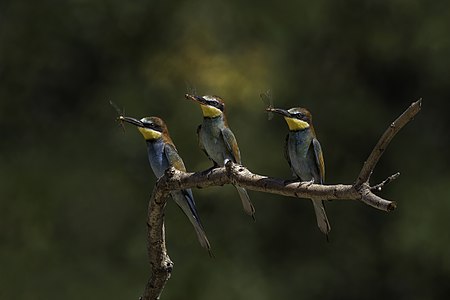Wikipedia:Main Page history/2024 April 2b
From today's featured article
Morgan Bulkeley (1837–1922) was an American politician and business executive from Connecticut, who was, in 1876, the first president of baseball's National League. A Civil War veteran and the son of the first president of the Aetna Life Insurance Company, Bulkeley also led Aetna, from 1879 until his death. A Republican, he was from 1880 to 1888 mayor of Hartford, and starting in 1889 served as governor of Connecticut. He controversially remained in office for a second two-year term because the houses of the state legislature could not agree about the outcome of the 1890 election. A Democratic official locked a door in the State Capitol against him, and Bulkeley had it opened with a crowbar, thus becoming "the Crowbar Governor". He left office in 1893, and served as a U.S. senator from 1905 to 1911. After his death in 1922, a bridge and a high school were named for him. His induction in 1937 into the Baseball Hall of Fame remains controversial because his involvement in the game was brief. (Full article...)
Did you know ...
- ... that the Lviv branch of the Ukrderzhnatsmenvydav (building pictured) was the main publisher of Polish literature in the Soviet Union by 1941?
- ... that TV Guide criticized Flypaper as among the "second-rate rip-offs" of Tarantino's Pulp Fiction?
- ... that the Canadian League for Peace and Democracy organized a 10,000-person rally at Maple Leaf Gardens in Toronto to protest a 2,500-person fascist rally?
- ... that illustrator Abigail Larson once designed a wine-bottle label for the Edgar Allan Poe Museum?
- ... that the Indonesian city of Gorontalo is nicknamed the "Porch of Medina"?
- ... that John Holahan recalled both being called a "lunatic" by his school's president for seeking a football game at night and being told afterward by the president, "I was the lunatic, not you"?
- ... that Beyoncé released a country ballad and an uptempo country pop western song on the same day?
- ... that some fans of Genshin Impact have referred to the character Paimon as "emergency food"?
- ... that an extinct French scarab beetle was discovered in a Prague factory?
In the news
- A bus falls from a bridge in Limpopo, South Africa, killing 45 people.
- The Francis Scott Key Bridge in the U.S. city of Baltimore collapses (wreckage pictured) after being hit by a container ship.
- Bassirou Diomaye Faye is elected President of Senegal.
- A mass shooting and explosions kill 144 people at the Crocus City Hall in Krasnogorsk, Russia.
On this day
April 2: World Autism Awareness Day; feast day of Saint Francis of Paola (Catholicism); Malvinas Day in Argentina (1982)
- 1863 – About 5,000 people in Richmond, Virginia, mostly poor women, rioted in protest of the high price of bread (depicted).
- 1979 – Spores of anthrax were accidentally released from a military research facility near the city of Sverdlovsk, causing at least 68 deaths.
- 1982 – Argentine special forces invaded the Falkland Islands, sparking the Falklands War against the United Kingdom.
- 1992 – Bosnian War: At least 48 civilians were massacred in the town of Bijeljina in Bosnia and Herzegovina.
- 2012 – A gunman shot at people inside Oikos University, a Korean Christian college in Oakland, California, leaving seven people dead and three injured.
- Prince George of Denmark (b. 1653)
- Wilhelmine Reichard (b. 1788)
- Sir James Montgomery, 1st Baronet (d. 1803)
- Elizabeth Catlett (d. 2012)
Today's featured picture

|
|
The European bee-eater (Merops apiaster) is a bird in the bee-eater family, Meropidae. It breeds in southern and central Europe, northern and southern Africa, and western Asia. Except for the resident southern African population, the species is strongly migratory, wintering in tropical Africa. This species, like other bee-eaters, is a richly coloured, slender bird. It has brown and yellow upper parts, whilst the wings are green and the beak is black. It can reach a length of 27–29 cm (10.6–11.4 in), including the two elongated central tail feathers. The most important prey item in its diet is Hymenoptera, mostly the European honey bee. Its impact on bee populations, however, is small. It eats less than 1% of the worker bees in areas where it lives. This group of three European bee-eaters, each with a dragonfly in its beak, was photographed in Kondor Tanya, Kecskemét, Hungary. Photograph credit: Charles J. Sharp
Recently featured:
|
Other areas of Wikipedia
- Community portal – The central hub for editors, with resources, links, tasks, and announcements.
- Village pump – Forum for discussions about Wikipedia itself, including policies and technical issues.
- Site news – Sources of news about Wikipedia and the broader Wikimedia movement.
- Teahouse – Ask basic questions about using or editing Wikipedia.
- Help desk – Ask questions about using or editing Wikipedia.
- Reference desk – Ask research questions about encyclopedic topics.
- Content portals – A unique way to navigate the encyclopedia.
Wikipedia's sister projects
Wikipedia is written by volunteer editors and hosted by the Wikimedia Foundation, a non-profit organization that also hosts a range of other volunteer projects:
-
Commons
Free media repository -
MediaWiki
Wiki software development -
Meta-Wiki
Wikimedia project coordination -
Wikibooks
Free textbooks and manuals -
Wikidata
Free knowledge base -
Wikinews
Free-content news -
Wikiquote
Collection of quotations -
Wikisource
Free-content library -
Wikispecies
Directory of species -
Wikiversity
Free learning tools -
Wikivoyage
Free travel guide -
Wiktionary
Dictionary and thesaurus
Wikipedia languages
This Wikipedia is written in English. Many other Wikipedias are available; some of the largest are listed below.
-
1,000,000+ articles
-
250,000+ articles
-
50,000+ articles




